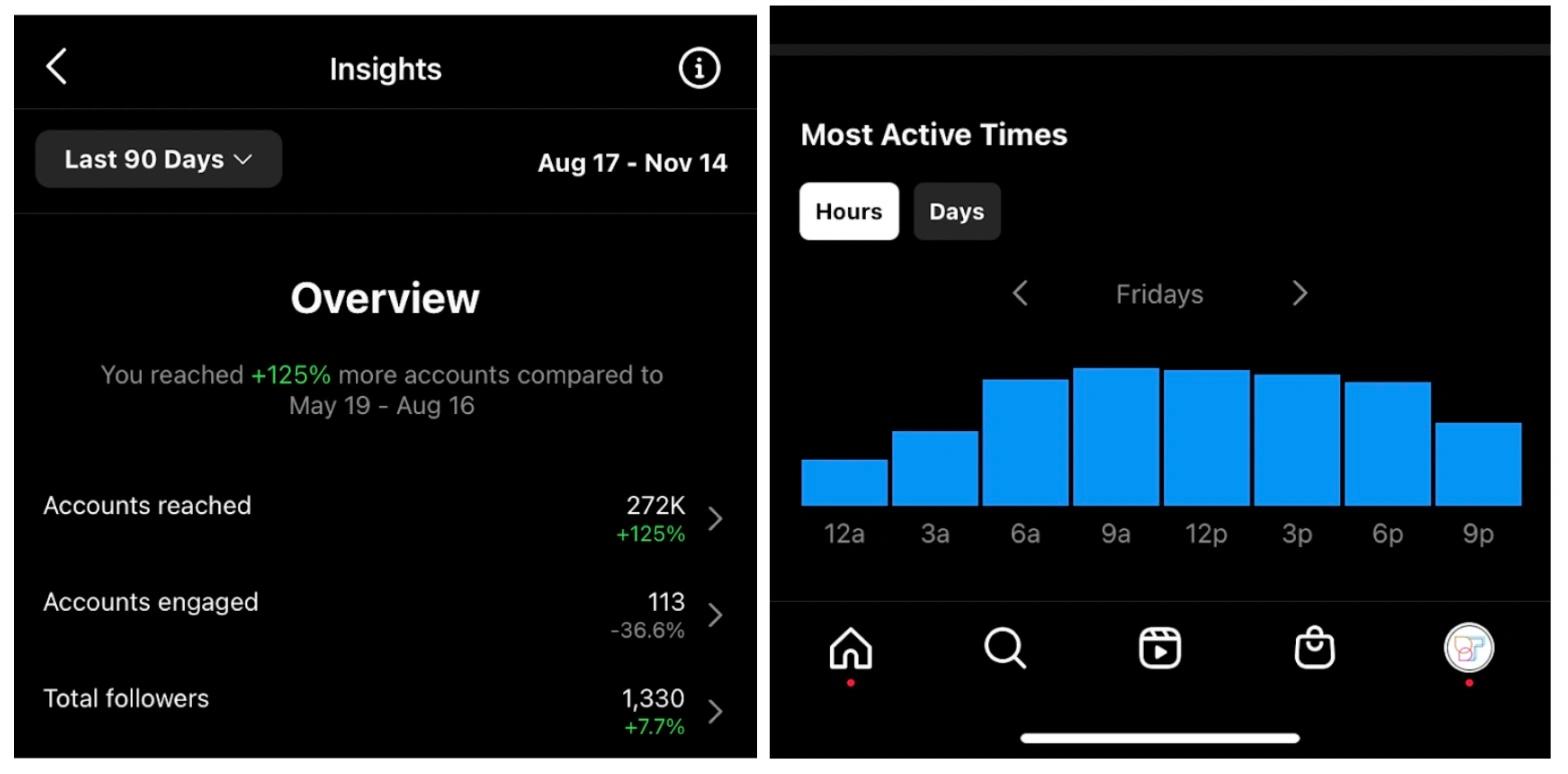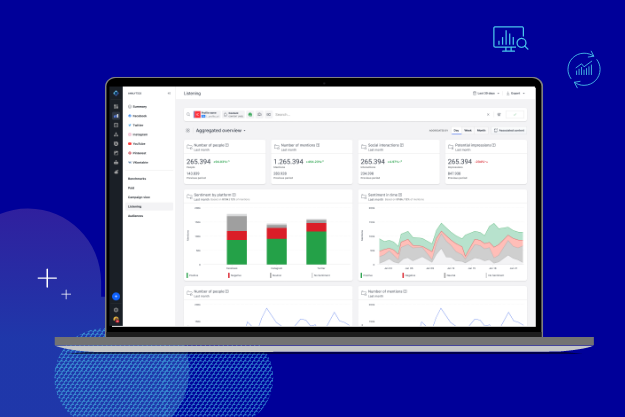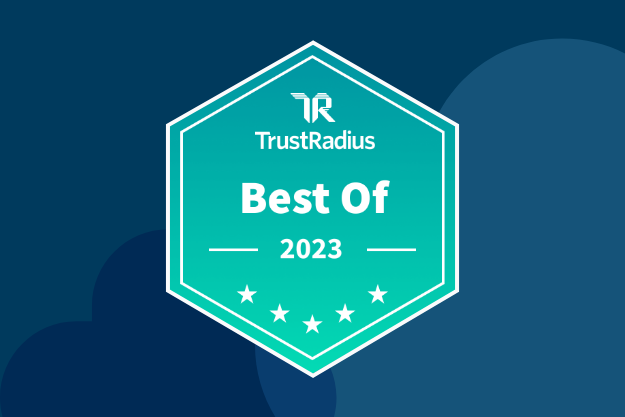Knowing the best time to post Reels on Instagram starts with understanding the rise of short-form video on Instagram and in general.
When the head of Instagram, Adam Mosseri, announced in 2021 that Instagram was shifting its focus from being solely a photo-sharing app to one that focuses on video, social commerce, and messaging, some long-time Instagram fans were upset. With new features came new challenges to navigating the app, and, just like users, brands had to figure out how to adapt their social media marketing strategies to features like Instagram Reels.
Whether you love it, think it’s a TikTok copycat, or have no opinion, there’s no doubt that Instagram Reels are here to stay. In fact, Reels most recently turned two years old, and it doesn’t look like Instagram has any plans of taking them down. To keep up with the trend, many companies and influencers are creating content for both Reels and TikTok to capture a broader range of audiences.
Instagram Reels often get far more than the number of likes an IGTV or in-feed video post might get. If you’re trying to gain more followers and increase the engagement rate of your content on Instagram, creating and posting Reels might just help you do that — but it’s essential to know the best time to post Reels on Instagram to maximize viewership and engagement.
Is there an ultimate best time to post?
It depends. While the global best time to post on Instagram is on Wednesday at 11am, you’ll likely see more success by determining the right time to post based on your audience. To do this, you’ll want to determine where most of your audience base is.
Knowing where your audience is based could make all the difference in determining the success of your posts. For example, if many of your followers are based in Asia, it doesn’t make sense to post at 1 p.m.Eastern Standard Time (EST) on a Monday, because it would be 1 a.m. on a Tuesday in most parts of Asia.
When’s the best time to post Reels on Instagram?
After analyzing more than 100,000 short-form video content posts and Instagram Reels, Influencer Marketing Hub has found that these are the best times to post Reels content (times in EST):
Monday: 6:00 AM, 10:00 AM, 10:00 PM
Tuesday: 2:00 AM, 4:00 AM, 9:00 AM
Wednesday: 7:00 AM, 8:00 AM, 11:00 PM
Thursday: 9:00 AM, 12:00 AM, 7:00 PM
Friday: 5:00 AM, 1:00 PM, 3:00 PM
Saturday: 11:00 AM, 7:00 PM, 8:00 PM
Sunday: 7:00 AM, 8:00 AM, 4:00 PM
A Hubspot study also found that the highest engagement rate for Instagram Reels tends to be between 6:00 PM and 9:00 PM. This is likely because most Instagram users are off work and school and free from other commitments.
Beyond these more generic time frames, here’s how you can determine the best time to post Reels on Instagram based on your unique follower base:
Create or switch to a Business or Creator account
With a Creator or Business account, you’ll be able to see how your Instagram account is doing. The best part is this feature is entirely free. All you’ll have to do is ensure that your account is public.
Once you’ve switched or created your account, post as usual and give Instagram time to collate enough information about your account. After about a week or two, check back to see if Instagram has garnered enough data to provide you with a report.
To switch your personal account to a business or creator account, head to the three horizontal lines (also known as the burger menu) at the top right of your profile, then click Settings. Next, click on Account, and at the bottom of the menu, click on the Switch to Professional Account option.
To analyze your account’s results, navigate to your Profile and click on Insights. The insights about your audience not only tell you the best time to post Reels on Instagram for your profile, but also where your followers are located and how they’ve interacted with your past posts.

Click the “total followers” tab once you’re in your account insights to discover the days and times that your own audience is most active.
According to ExpressVPN, 72% of Gen Z has an Instagram account. No matter what age group you're targeting with your Reels strategy, from Gen Z to an older audience, it's beneficial to spend some time in your account analytics to get to know your followers.
Post different types of content
Unless you already know the type of content that does well for your brand, it’ll definitely be beneficial to experiment and see what kind of content does best on your account. By experimenting, you’ll be able to understand better and determine what your audience likes and what they don’t.
For brands and users alike, creating different types of content every once in a while could also surprise and delight your audience.

Here are some types of content you can experiment with:
Unboxing videos
Tutorial Reels
First reaction videos
Daily vlog
Behind-The-Scenes
You can determine the success of a post by looking at the individual analytics of different reels by clicking on the View Insights button on a Reel. You’ll be able to see the number of accounts reached, the number of plays, and how many saves and shares you got for your post.
Experiment with hashtags, stickers, and sounds
The many interactive parts of an Instagram Reel can be great ways to increase the likelihood of people discovering your posts organically. This could lead to an increase in engagement rates, too.
Interactive stickers, trending sounds, and popular hashtags all increase can all be used on your various Reels, and you can determine the best time to post as well as the best post elements that engage users.
It’s essential to use data and analytics to analyze and see how well content does. Every once in a while, look at how well your content is doing and see what you can do to improve the type of content you’ve posted.
Like every other social media platform, it might take some time to understand how fully Instagram Reels works before being able to optimize your content for it. However, social media is always a work in progress, and getting the hang of it will make for great learning opportunities.
Editor's Note: This article was originally published on pixlee.com. Any statistics or statements included in this article were current at the time of original publication.







































